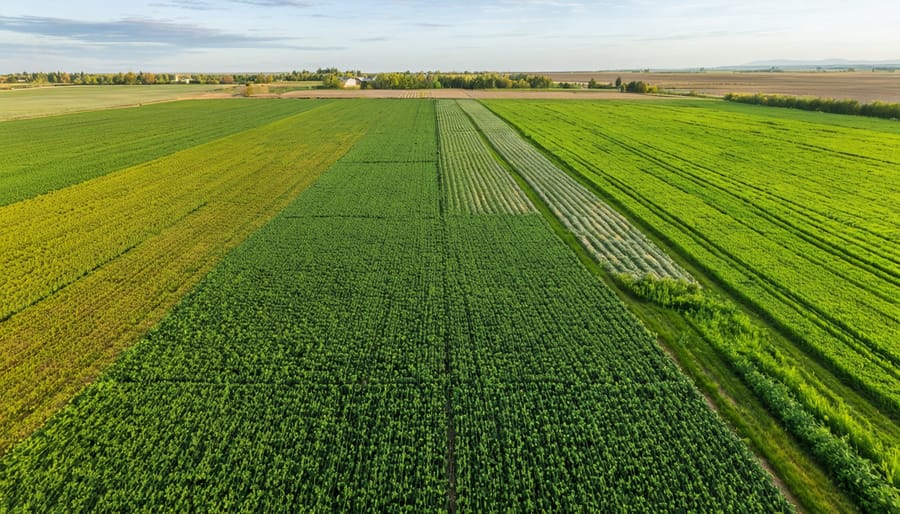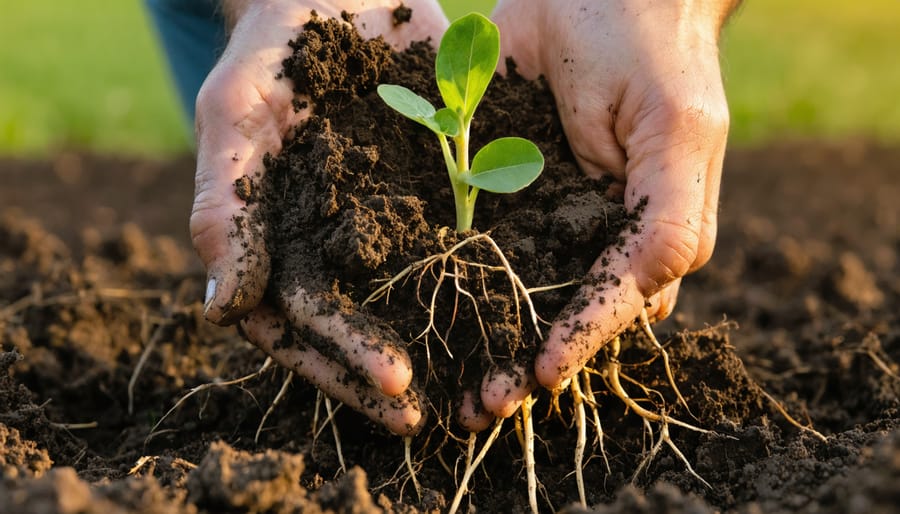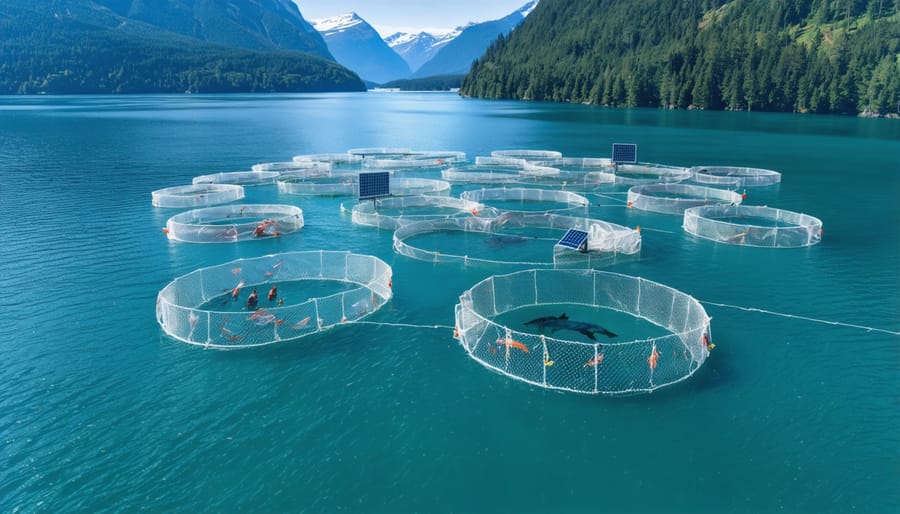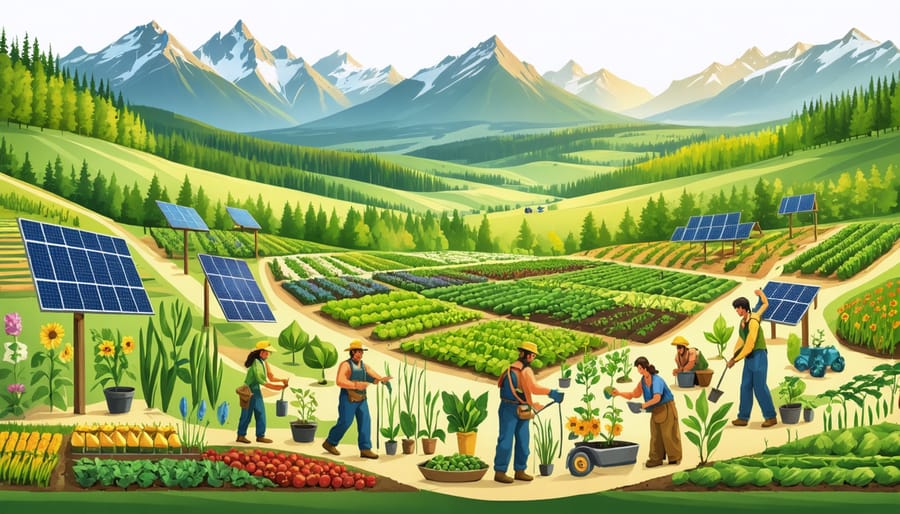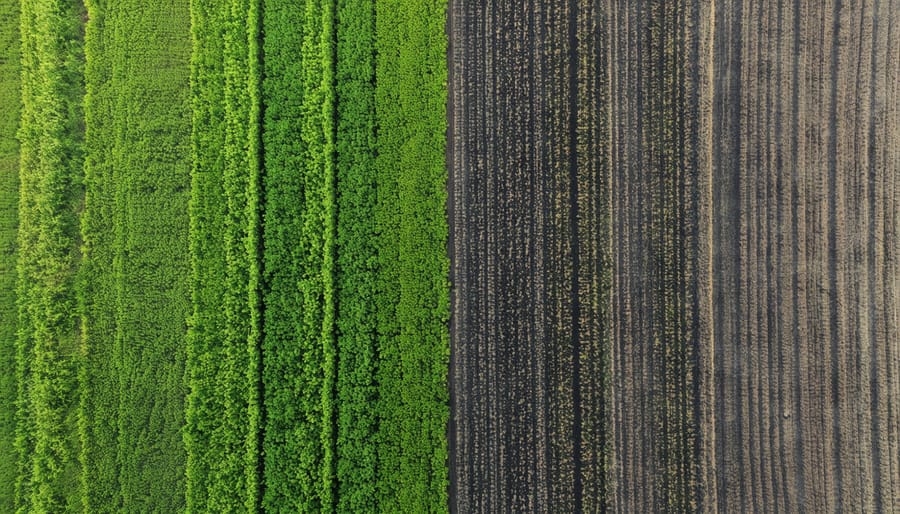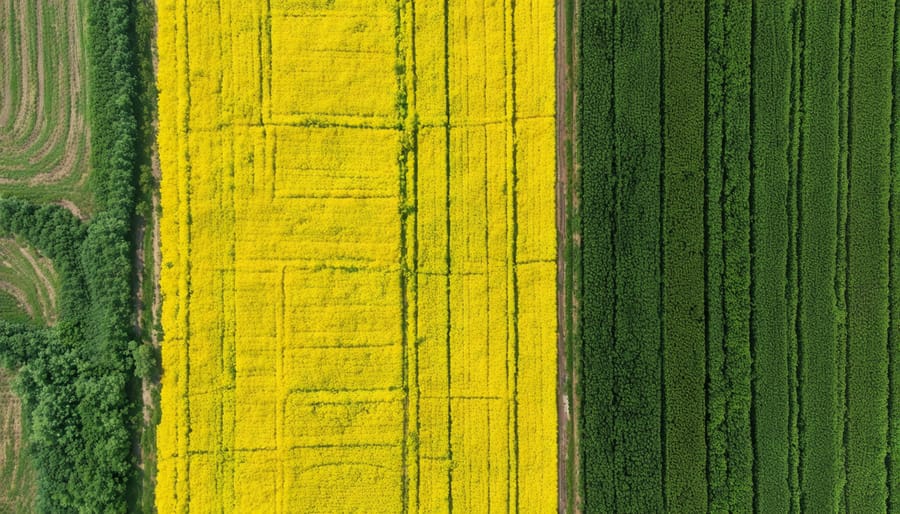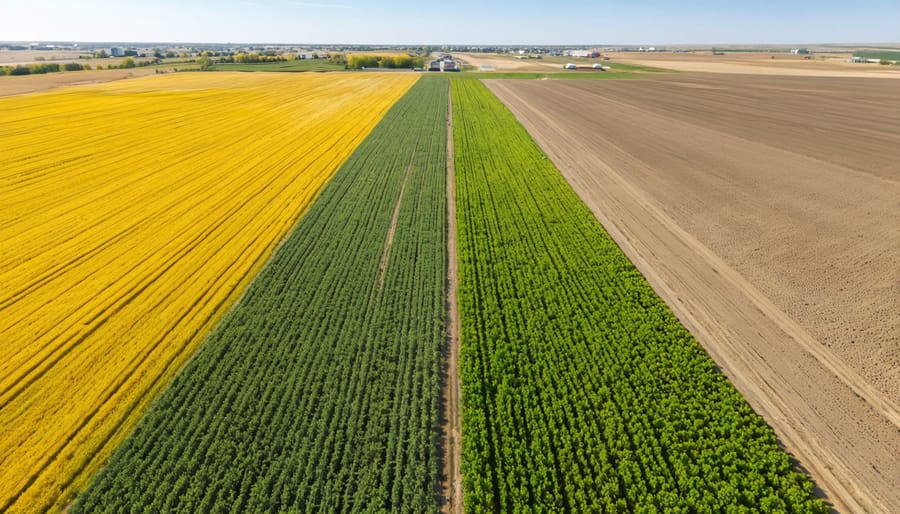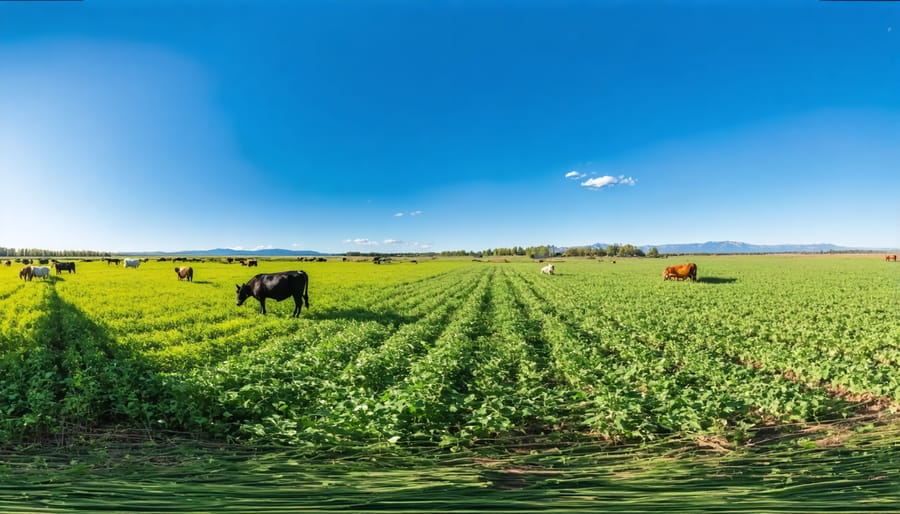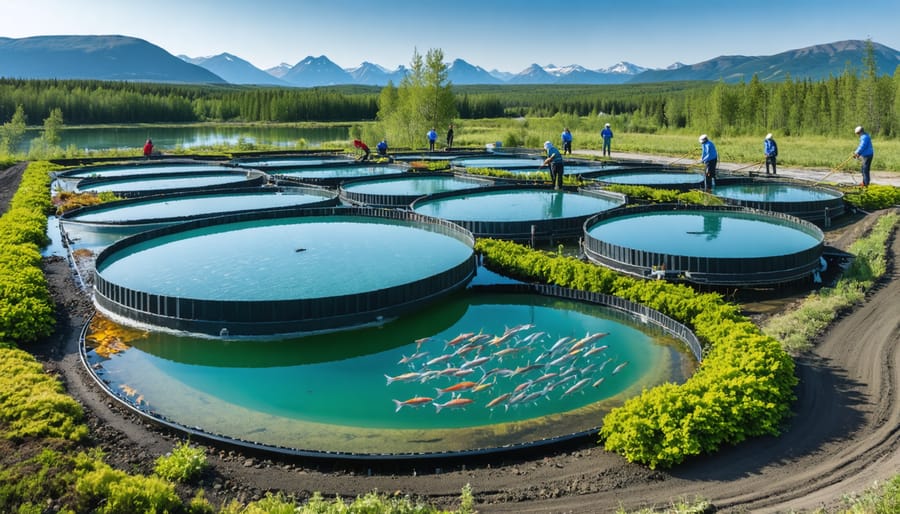A food web reveals nature’s intricate survival story, showcasing how every creature in an ecosystem connects through complex feeding relationships. Unlike simple food chains, these interconnected networks demonstrate how farm biodiversity and natural ecosystems maintain balance through multiple feeding pathways. From soil microorganisms to apex predators, each species plays a crucial role in transferring energy and nutrients, creating resilient biological communities that can withstand environmental changes. For Alberta’s agricultural landscape, understanding food webs becomes particularly relevant as farmers work to maintain healthy ecosystems that support both crop production and local wildlife. These natural networks not only sustain life but also provide essential services like pest control and pollination, demonstrating why healthy food webs are fundamental to both wild ecosystems and productive farmland. By recognizing these connections, we gain valuable insights into managing agricultural systems that work in harmony with nature’s inherent wisdom.
Understanding Food Webs in Your Agricultural Ecosystem
Key Players in Farm Food Webs
In Alberta’s farming ecosystems, three key groups work together to maintain healthy soil and crop production. Producers, primarily our crops and other plants, form the foundation by converting sunlight into energy through photosynthesis. Common examples include wheat, canola, and natural grassland species that support our livestock operations.
Consumers make up the second group, operating at different levels. Primary consumers include beneficial insects like pollinating bees and grasshoppers that feed directly on plants. Secondary consumers, such as ground beetles and birds, help control pest populations. At the top, we find tertiary consumers like hawks and coyotes, which play crucial roles in maintaining rodent populations.
Decomposers, often overlooked but essential players, complete the cycle. Our prairie soils are rich with earthworms, bacteria, and fungi that break down organic matter into nutrients. These organisms transform crop residue and animal waste into valuable components that enhance soil fertility. For example, a single square metre of healthy Alberta farmland can contain thousands of beneficial decomposing organisms working to support crop growth.
Understanding these relationships helps us make better farming decisions, from crop rotation planning to beneficial insect conservation.
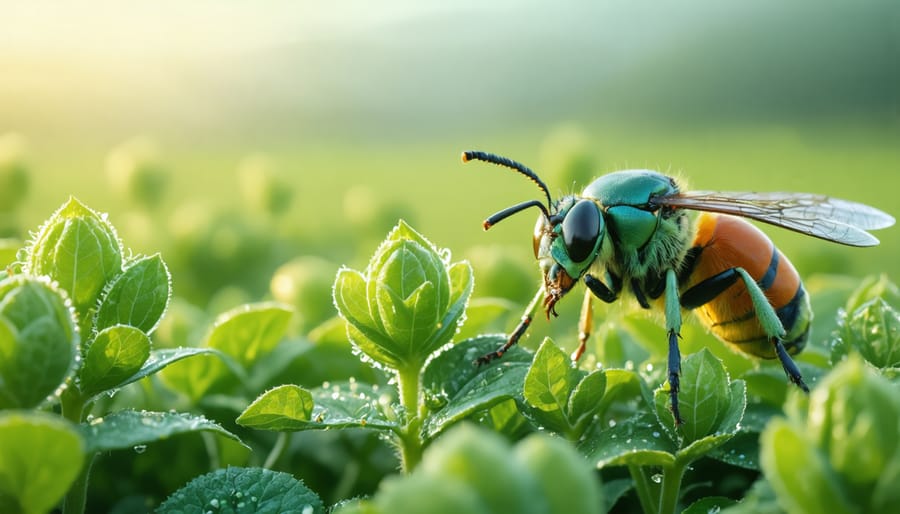
Energy Flow Through Your Farm’s Food Web
On your farm, energy flows like water in a stream, starting with the sun and moving through each level of your agricultural ecosystem. Your crops, whether it’s canola in the fields or alfalfa in the pastures, capture solar energy through photosynthesis, converting it into chemical energy that feeds the entire system. This forms the foundation of your farm’s food web.
As you move up the chain, primary consumers like cattle grazing on hay or insects feeding on wheat plants only capture about 10% of the available energy from the plants they eat. The same principle applies when predators like hawks hunt mice in your fields or when beneficial insects prey on crop pests – they’ll utilize just 10% of their prey’s energy.
Understanding this energy transfer helps you make practical decisions. For example, maintaining hedgerows and shelterbelts supports diverse predator populations that naturally control pests. Rotational grazing ensures your livestock make the most efficient use of available plant energy, while cover cropping helps capture and retain more solar energy in your soil system.
By working with these natural energy flows, you’re not just producing food – you’re nurturing a complex web of life that makes your farm more resilient and productive.
Food Webs and Biodiversity on Alberta Farms
Success Stories from Alberta’s Fields
Jim and Sarah Peterson of Sundre demonstrate how understanding food webs transformed their 400-hectare mixed farm. By implementing agroecological practices, they’ve created a thriving ecosystem where beneficial insects naturally control pests, reducing pesticide use by 70% over three years.
In Lacombe, the Martinez family farm showcases the power of diversity. Their introduction of flowering strips between crop rows attracted pollinators and predatory insects, leading to improved yields in their canola fields and stronger resilience during drought periods.
Third-generation farmer David Thomson from Red Deer County shares how understanding soil food webs revolutionized his approach. By minimizing tillage and incorporating cover crops, he’s built a robust underground ecosystem. “The earthworms are my livestock now,” he jokes, noting how soil organic matter increased from 2% to 5% in just four years.
Perhaps most inspiring is the story of the Wilson Sisters’ operation near Olds. Their carefully planned rotational grazing system mimics natural prairie food webs, resulting in improved pasture health and a 40% increase in carrying capacity. They’ve documented 23 species of native birds returning to their land, proving that productive agriculture and biodiversity can coexist successfully.
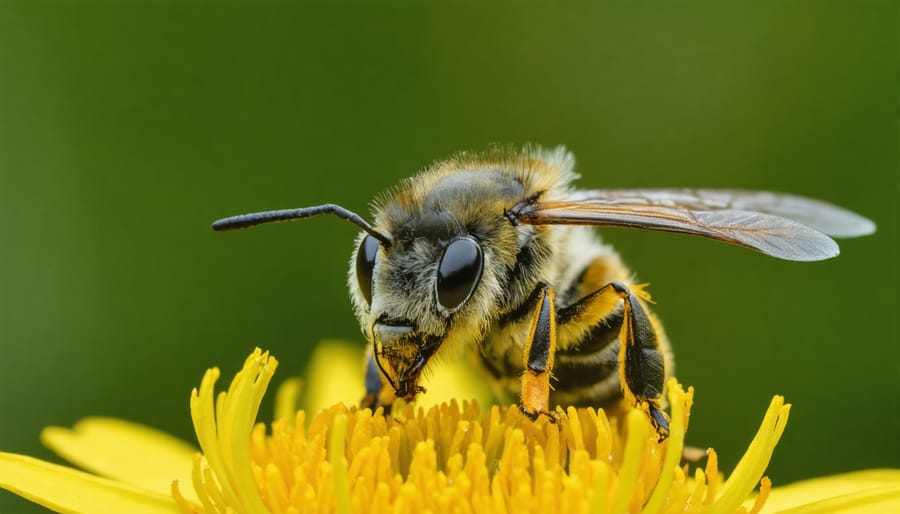
Common Food Web Relationships in Prairie Agriculture
In Alberta’s agricultural landscape, food web relationships play a crucial role in maintaining healthy crop production and pest management. A prime example is the relationship between canola crops, beneficial insects like ladybugs, and aphids. Ladybugs act as natural pest controllers, feeding on aphids that would otherwise damage the canola plants.
Ground-nesting birds such as sharp-tailed grouse and meadowlarks form another important link in prairie food webs. These birds feed on grasshoppers and other insects that can threaten crops, while also helping with seed dispersal across fields. Their presence often indicates a healthy agricultural ecosystem.
Soil-dwelling organisms create complex underground food webs that directly impact crop health. Earthworms break down organic matter, supporting beneficial fungi and bacteria that help release nutrients for crops. Meanwhile, predatory nematodes help control harmful root-feeding insects.
Coyotes and hawks maintain balance in the system by controlling rodent populations that might otherwise damage crops. However, these predators also rely on field margins and natural areas for shelter, highlighting the importance of maintaining diverse habitats within agricultural landscapes.
Pollinators like native bees and butterflies form critical connections between flowering crops and wild plants, ensuring successful seed production while maintaining genetic diversity in plant populations. This interconnected system demonstrates how supporting biodiversity can enhance agricultural productivity while reducing the need for chemical interventions.
Strengthening Your Farm’s Food Web
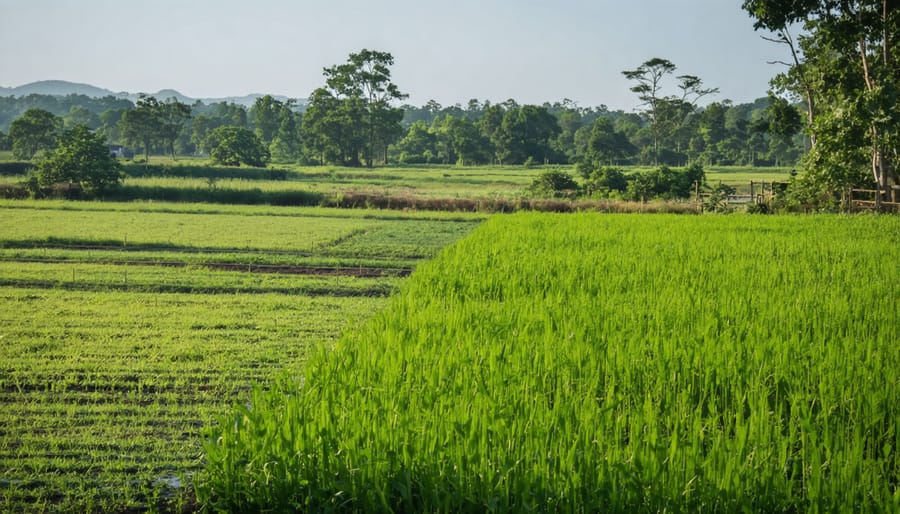
Sustainable Practices That Support Food Web Health
As Alberta farmers, we play a crucial role in maintaining healthy food webs through thoughtful land management. By implementing regenerative farming methods, we can enhance biodiversity while maintaining productive agricultural operations.
Start by diversifying crop rotations to include at least three different crops. This practice supports various soil organisms and creates habitats for beneficial insects. Consider incorporating cover crops like clover or rye between main growing seasons, which protect soil and provide food for wildlife.
Establish buffer zones and hedgerows along field edges using native plants like wolfwillow and saskatoon berry. These areas serve as corridors for wildlife movement and support local pollinators. Many Alberta farmers have found success maintaining about 5-10% of their land as natural habitat.
Reduce tillage operations where possible to protect soil organisms. Maintaining crop residue provides shelter for beneficial insects and food for decomposers. Consider integrated pest management strategies, using biological controls before chemical interventions.
Create water features like small ponds or wetlands where feasible. These support amphibians and birds that help control pest populations naturally. Even small actions matter – leaving some stubble over winter provides crucial habitat for winter-active species.
Remember, healthy food webs support farm productivity through natural pest control, improved pollination, and enhanced soil fertility. These practices have been successfully implemented by numerous Alberta farmers, proving that biodiversity and profitable farming can work hand in hand.
Measuring Food Web Success on Your Farm
As Alberta farmers, you can assess your farm’s food web health through several practical methods. Start by conducting regular soil biodiversity surveys – simply dig up a 30 cm square of soil and count the different organisms you find. A healthy sample should contain various insects, worms, and visible fungi.
Track your beneficial insect populations by setting up simple monitoring stations. White plates filled with water can help you count pollinators, while sticky traps can monitor pest-predator relationships. Keep a seasonal log of these observations – many successful Alberta farmers report that spring and fall are ideal for these assessments.
Bird diversity is another excellent indicator of food web health. Set aside 15 minutes each morning to count bird species around your fields. Local agricultural extension offices can provide bird identification guides specific to our region. Remember, seeing birds of prey suggests a robust population of small mammals, indicating a well-functioning food web.
Soil testing goes beyond standard nutrient analysis. Consider requesting microbial activity assessments from soil testing labs. Many Alberta producers have found success using the tea bag test – burying tea bags in different field locations and measuring decomposition rates after 90 days.
Document changes in crop health and yield variations across your fields. Areas with strong food webs typically show better resilience during stress periods and require fewer external inputs. Share your findings with local farming groups – collective knowledge helps our whole agricultural community improve.
Expert Insights: Food Webs and Farm Productivity
In my 25 years of studying agricultural ecosystems, I’ve observed that farms with robust food webs consistently show higher productivity and resilience,” shares Dr. Sarah Thompson, a leading researcher at the University of Alberta’s Agricultural Science Department. Thompson emphasizes that understanding food webs isn’t just academic – it’s a practical tool for farm success.
Local farmer James McKenzie from Red Deer County has experienced this firsthand. “Since we started managing our farm with food webs in mind, we’ve seen a 30% reduction in pest-related crop damage,” he notes. McKenzie’s success stems from promoting beneficial insect populations that naturally control pest species, creating a balanced ecosystem that practically maintains itself.
Dr. Robert Chen, an ecological consultant serving Alberta’s farming community, points out that crop diversity benefits extend beyond just yield improvements. “When you maintain diverse food webs, you’re essentially building insurance for your farm. Different species can respond differently to stress, ensuring that something always survives challenging conditions.”
The experts agree on three key strategies for maintaining healthy farm food webs:
– Maintaining buffer zones and natural areas around crops
– Rotating crops to support soil biodiversity
– Minimizing broad-spectrum pesticide use to protect beneficial insects
“What’s particularly exciting for Alberta farmers,” adds Thompson, “is how our unique climate actually supports complex food webs when managed properly. Our long summer days and varied landscape create perfect conditions for diverse species interactions.”
Recent studies from the Prairie Agricultural Research Institute show that farms implementing food web-conscious practices have seen up to 20% increases in yield stability over five-year periods, while reducing input costs by an average of 15%.
Understanding food webs is essential for sustainable farming practices here in Alberta. As we’ve explored throughout this article, these intricate networks of relationships between species play a vital role in maintaining healthy agricultural ecosystems. From the soil microorganisms beneath our feet to the beneficial insects pollinating our crops, every organism contributes to the delicate balance that supports our food production.
By recognizing the importance of food webs, we as farmers can make more informed decisions about our agricultural practices. This might mean implementing integrated pest management strategies, maintaining natural habitats alongside cropland, or choosing cultivation methods that protect beneficial soil organisms.
The strength of Alberta’s agricultural community lies in our ability to adapt and work together. Consider connecting with local agricultural extension services, joining farmer-led research initiatives, or participating in community workshops to share knowledge about maintaining biodiversity on your land. The Prairie Conservation Forum and other regional organizations offer excellent resources for farmers interested in enhancing their understanding of ecological relationships.
Remember, every action we take to protect and support food webs on our farms contributes to the resilience of our agricultural systems. Whether you’re managing a large operation or a small family farm, your role in preserving these biological networks matters. Let’s continue working together to maintain healthy, productive farmland for future generations of Alberta farmers.

